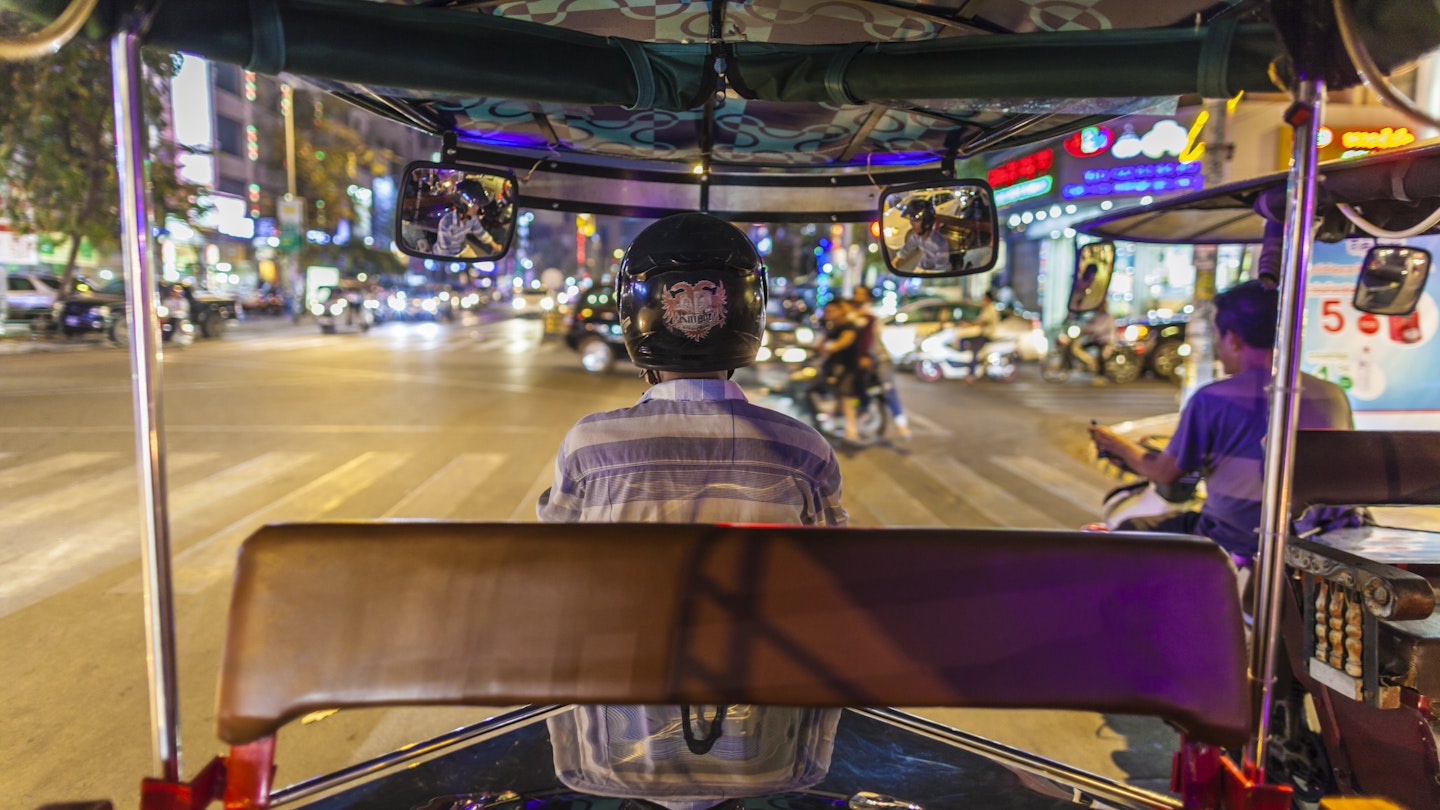Explore Phnom Penh with GoTravelDaily
Phnom Penh has often struggled to be defined by anything other than its grim past under the Khmer Rouge. Even today, the Tuol Sleng Genocide Museum and Killing Fields of Choeung Ek are among the most visited sights. Yet, since the fall of the Khmer Rouge in 1979, more than 70% of the current population is under 30, and they are out to redefine the image of Cambodia’s capital.
Coming out of the pandemic, Phnom Penh reemerges as a rapidly rising metropolis with glittering skyscrapers, world-class restaurants, and one of the fastest-growing major airports globally. From gender-bending dancers to backyard brewers and aspiring artists, innovation thrives here as the city sheds the remnants of the past and looks toward the future with optimism.
Where to Get the Best Coffee in Phnom Penh
Classic attractions in Phnom Penh include the ornate Royal Palace, art deco Central Market, and hilltop Wat Phnom, where the city’s story begins. These sights hug the mighty Mekong River north of Preah Sihanouk Boulevard, providing a picturesque backdrop to explore saffron-clad monks strolling past glimmering wats and vibrant markets. However, to experience the trendier side of Phnom Penh, it’s best to head south and inland.
Boeung Keng Kang (BKK) is a leafy area just below Preah Sihanouk, popular with ex-pats thanks to its third-wave coffee shops featuring Cambodian beans and fashionable eco-friendly boutiques, especially around Golden Street (St 278) and Langka Lane.
Nearby, in the hip Russian Market neighborhood, traditional shows take place every evening at the National Museum, which houses the world’s largest collection of Khmer sculpture.
On the southern edge of town, a 3.4-hectare former Levi’s factory was transformed in 2018 into Factory Phnom Penh, a mural-covered hub for entrepreneurs, artists, and creative thinkers. With 50 free-to-use bikes available for visitors, exploring the sprawling campus is easy. The venue features four galleries, including the nation’s largest contemporary art space, Kbach, along with a skate park, theatre, cinema, market, restaurants, brewery, and co-working space, providing ample opportunity to spend hours here.
Where to Eat and Make a Difference
Sandwiched between the culinary powerhouses of Thailand and Vietnam, Cambodia may not seem like a top foodie destination; however, visitors often discover that Phnom Penh surprises with its creativity and flair. The city is home to not-to-miss restaurants like Nesat Seafood House (known for its exceptional soft-shell crabs and oysters), Malis (the pinnacle of Khmer fine dining), and Vibe Café (a hub for the city’s growing vegan scene).
Phnom Penh also has several dining options that contribute to local causes. The art-filled House of Scott combines efforts between the Cambodian Children’s Fund and the Academy of Culinary Arts. Moreover, the local humanitarian organization Tree Alliance runs vocational training for at-risk youth at prominent locations like Friends (famous for fusion tapas) and Romdeng (offering traditional Cambodian fare like amok, a curry dish). Another unique dining option is Dine in the Dark, where visually impaired waiters guide diners through multi-course meals designed to stimulate the senses.
The Best Local Drink to Order in Phnom Penh
As Phnom Penh evolves, sleazy hostess bars are becoming relics of the past. The nightlife scene is shifting toward a more sophisticated atmosphere, with newer bars combining flair for design with an extensive selection of craft cocktails at affordable prices.
At the center of this transformation is Bassac Lane, a narrow alleyway off St 308, featuring closet-sized bars that cater to the city’s bohemian crowd. A short walk away, one can find Samai, a premium rum distillery where sugarcane has been cultivated in Southeast Asia for centuries. Visitors can sample local favorites, such as Kampot Pepper Rum, during tasting parties held every Thursday evening.
Across town in the Russian Market neighborhood, guests can relax at Sundown Social Club, a funky rooftop bar that offers stunning views over the Russian Market. Additionally, craft breweries such as Riel Brewing are part of the burgeoning craft beer scene, alongside standout establishments like Himawari and Cerevisia.
As the night progresses, the scene comes alive around the intersection of St 51 and St 172, aptly referred to as “Area 51.” This area features several LGBTQ-friendly establishments, including Blue Chili and Heart of Darkness, which are known for their extravagant late-night drag performances.
Best Recommendations on Where to Stay
Phnom Penh offers exceptional value for money, featuring a wide range of accommodations that cater to all tastes and budgets.
Backpacking couples seeking peace often recommend SLA, a boutique hostel near the National Museum, where pristine dorms come with double bunk beds featuring privacy curtains. For travelers desiring a combination of perks like a pool and bar without the chaos of a typical party hostel, Manor House provides a charming atmosphere as a former villa hotel near Independence Monument that now operates as a budget-friendly option.
Those willing to invest $40 or more will find themselves spoiled for choice. The luxurious Patio Hotel boasts inlaid stone showers in its art-filled rooms, a panoramic rooftop infinity pool, and an unbeatable location on one of the city’s trendiest alleyways in BKK. Just steps away near Wat Langka, Villa Langka offers a more subdued setting with traditional Khmer villa rooms that overlook a serene pool and fragrant gardens.
The MAADS hotel group has set the standard for upscale boutique hotels in the city, with some of Southeast Asia’s most atmospheric urban accommodations. Their newest addition, Penh House, is located near the Royal Palace, while Pavilion, an elegant adults-only establishment in a picturesque French villa, remains a favorite, complete with two teal swimming pools and private plunge pools attached to its splendid suites.
This article was first published Nov 20, 2019, and updated Nov 11, 2021.





